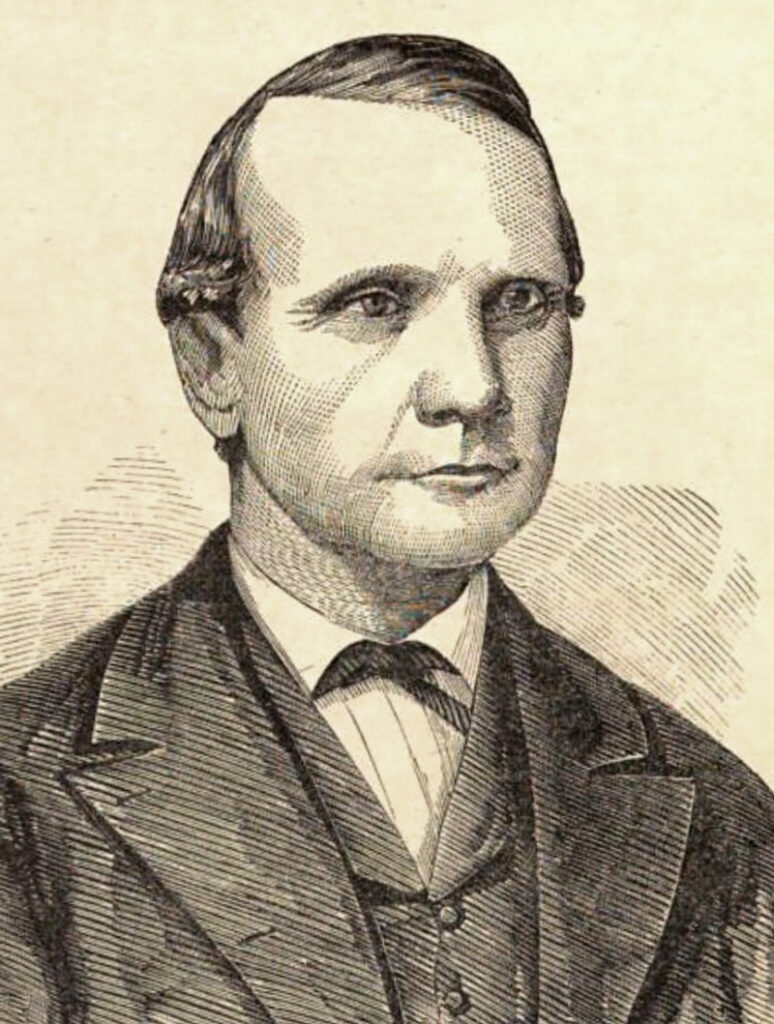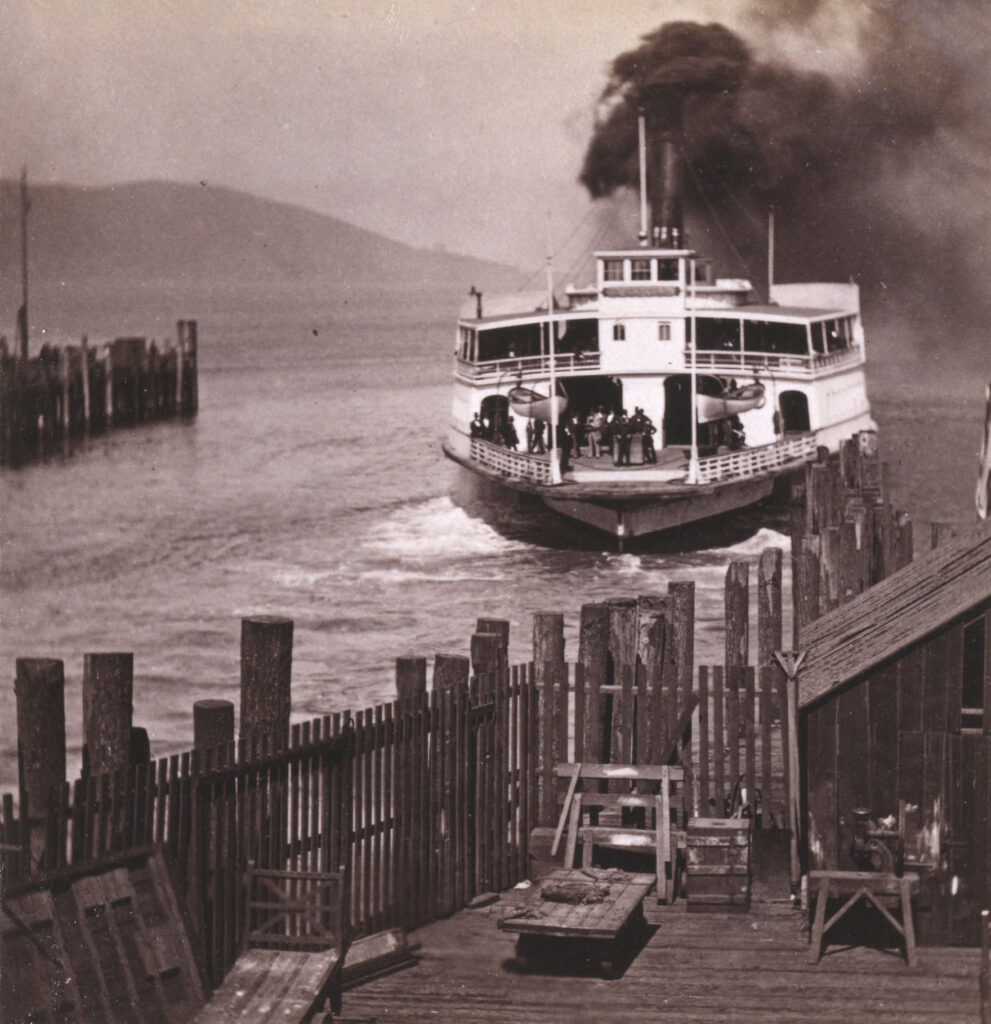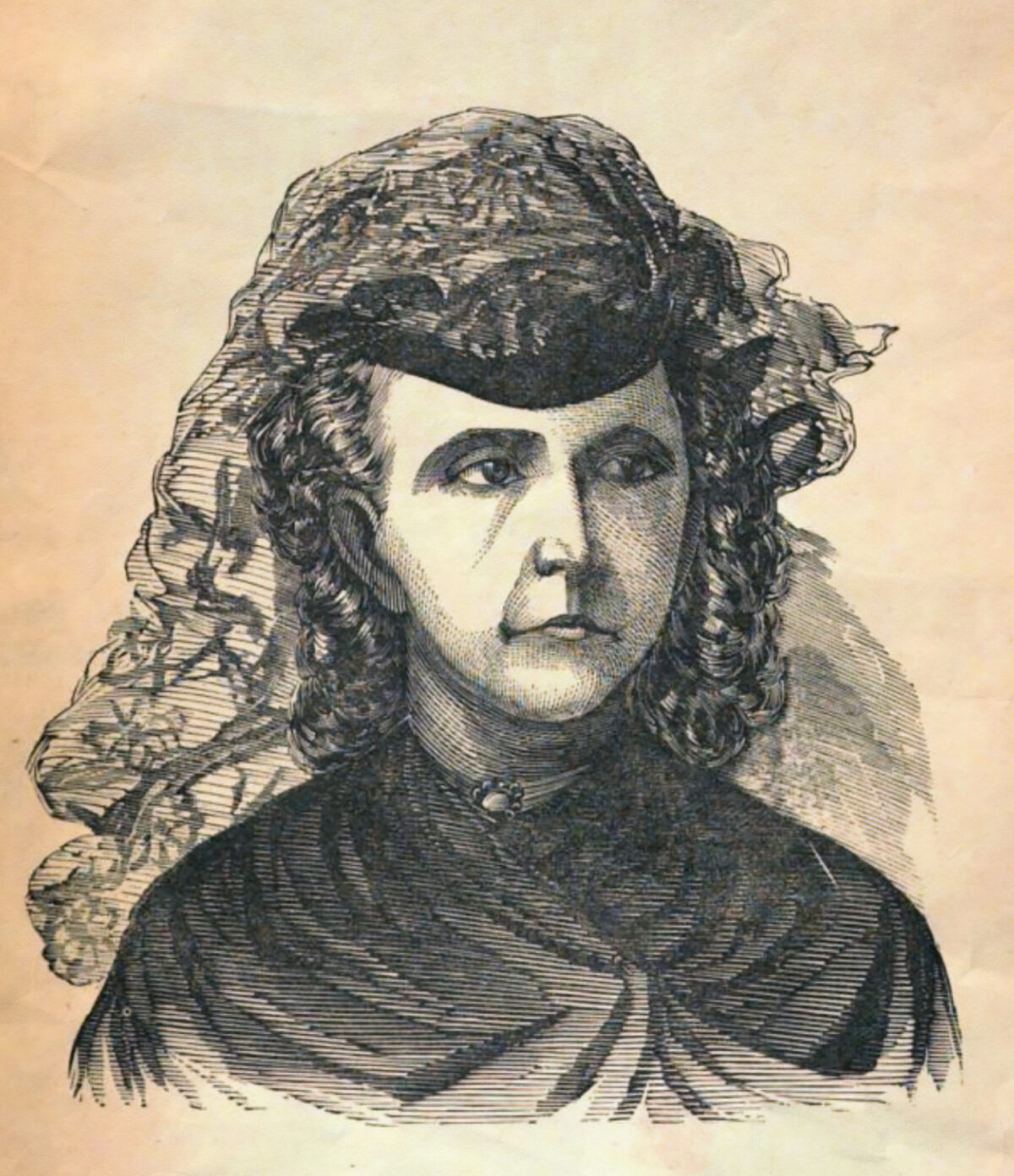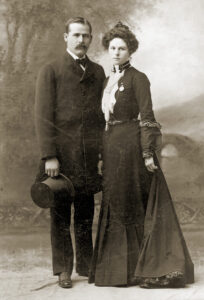O n the evening of Nov. 3, 1870, Laura Fair, whom one contemporary newspaper dubbed a “saucy wench,” dressed all in black with a black veil and followed her lover, Alexander Crittenden, onto the San Francisco–bound ferry El Capitan. Aboard she found him sitting on a bench with his wife and three of his children. Approaching the group, Fair shouted, “You have ruined me!” and abruptly shot Crittenden with her Sharps pepperbox pistol. Within hours he was dead.
Five months later, much to her surprise, a jury convicted her of the murder.
She had expected an acquittal.
“All her life in the West,” historian Dee Brown wrote of Fair, “she had been idolized merely because she was one of the petticoated few, [and] during the 1850s and 1860s females had shot males down and escaped scot-free.” Rightly so, many thought. There was an unwritten rule of the times that warned seducers to beware. In her 2013 book The Trials of Laura Fair Carole Haber, a professor of history at Tulane University, quotes a period lawyer saying in the purple prose of the day, “He who invades the family circle to blight it with dishonor, he who robs the fireside of its chastity and tears from the home of virtue wife or daughter or sister, justly forfeits his life.”
Crittenden was obviously a seducer, but so was Fair, and the West was changing.
Born Laura Ann Hunt in Holly Springs, Miss., in 1837, the future femme fatale married her first husband, a man more than twice her age, at age 16 in 1853. He died a year later—“mysteriously,” Brown notes. Soon remarried, she just as quickly abandoned that husband. Moving to California in 1856, she next took up with and married lawyer William D. Fair, 15 years her senior. They, too, split, and he killed himself. By 1863, with the Civil War raging in the East, Fair was running a boardinghouse in Virginia City, Nev., when a shopkeeper there ran up a Union flag outside his store. A true Southerner, Fair took offense and cut down the flag.
In the process, she admitted, “I may have cut his hand a little.”
She was arrested, and Crittenden was conspicuous in the audience during her trail, an indicator the affair had either started or was about to.

Hailing from a prominent family in Lexington, Ky., Alexander Parker Crittenden was a West Point graduate and a nephew of John J. Crittenden, who had been governor of Kentucky and U.S. attorney general under President Millard Fillmore. In keeping with the pattern, Alex was 21 years older than Laura. Their May-December affair waxed and waned over the next seven years, Fair taking a break in the midst of it to marry and divorce once again. Adding to the tensions, in 1864 Crittenden’s wife, Clara, and family came to Nevada to be with him. (In all the Crittendens had had 14 children, only eight of whom survived to adulthood.)
Fair later followed the family when it relocated to San Francisco.
There she got in another scrape when a tradesman, this time a man to whom she owed money, barged into her home demanding payment. Fair slashed at him with a pair of scissors, cutting his coat. Though arrested, she was found not guilty at trial. According to Haber, the court ruled that “the offending party…was the tradesman who tried to force his way into the house of a poor, defenseless woman.”
Crittenden continued to dally with Fair in San Francisco and abide with her at times tempestuous moods—she was said to have fired at least one shot at him during an argument—always reconciling with her and swearing his intention to divorce Clara and make Fair his legal wife. At one point he sent Fair to Indiana, where he said divorce laws were less rigid, and promised to meet her there. He didn’t, and Fair grew suspicious he would never divorce the loyal Clara and marry her. Finally, in November 1870 Fair learned that Crittenden’s wife and three of her children were returning from a trip to the East and went to observe the family reunion at the Oakland railroad station. She wondered how Crittenden would greet the woman he said he no longer loved and was going to divorce.
Apparently, he greeted her much too warmly.
Riled, Fair followed the family onto El Capitan and shot Crittenden point-blank in the chest. She then dropped the gun and walked away, pursued by Crittenden’s 14-year-old son and a local policeman who happened to be aboard. Cornered in the wheelhouse, Fair surrendered. The wounded Crittenden was taken home, where he died two days later.

Convened in March 1871, Fair’s trial garnered national news coverage, and locals lined up for seats in the courtroom. Fair was confident her gender and the “unwritten laws” of the time, along with the defense argument that she had acted in a moment of insanity, or “female hysteria,” would spring her from the San Francisco County Jail. But public opinion was against her. For one, Brown wrote, “She had been so unladylike as to shoot her man while he was actually in the presence of his of his own legal wife.” Meanwhile, suffragettes like Susan B. Anthony railed against the idea of “female hysteria” as something used for centuries to keep women subservient to men.
After deliberating a mere 40 minutes, the jury found her guilty, and Fair was sentenced to death by hanging.
But that wasn’t the end of it.
Fair appealed, wrangled a retrial in 1872 and was found not guilty on the grounds of “emotional insanity,” which sounds a lot like “female hysteria.” Released, she continued to reside in San Francisco. “She lives in style,” wrote a visitor to that city in 1875. “Few ladies are so often named at dinner tables, and the public journals note her doings as the movements of a duchess might be noted in Mayfair.”
Fair, 82, died a free—and single—woman in San Francisco on Oct. 19, 1919.






